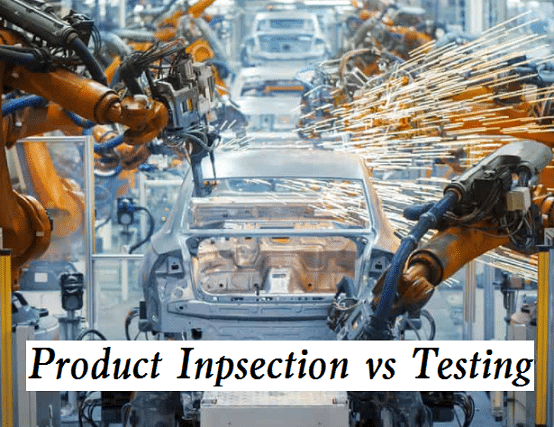Both product testing and product inspection are important aspects of quality control, they serve different purposes and are performed at different stages. Let’s take a look at the differences between production inspection and testing, as well as tips for choosing between them.

Differences Between Product Testing and Product Inspection
Product testing and product inspection are both important aspects of quality control in manufacturing, but there are some key differences between the two:
- Purpose: The purpose of product testing is to evaluate the performance and characteristics of a product under specific conditions, such as stress, temperature, or humidity. The purpose of product inspection is to identify defects or non-conformities in a product that do not meet the required specifications.
- Timing: Product testing is typically performed during the development and prototyping stages of a product, as well as during ongoing quality control checks. Product inspection is typically performed during the final stages of production after the product has been manufactured and assembled.
- Methodology: Product testing involves subjecting a product to specific tests or conditions, such as durability tests or environmental tests, to evaluate its performance. Product inspection involves visually inspecting a product, or using measuring or testing tools, to identify defects or non-conformities.
- Scope: Product testing may evaluate a range of performance characteristics, including durability, safety, and functionality. Product inspection focuses on identifying defects or non-conformities in specific dimensions, features, or components of a product.
- Documentation: Product testing often involves documenting the results of tests, including measurements, observations, and conclusions. Product inspection typically involves documenting the defects or non-conformities identified during the inspection, as well as any corrective actions taken.
Product Inspection vs Testing, Which One to Choose?
Both inspection and testing have their advantages and limitations, the choice between product inspection and testing will depend on the specific needs and requirements of each application. Here are some general guidelines to help you determine which approach to use for different applications.
Product inspection can quickly and easily identify defects or non-conformities in finished products, making it a cost-effective and efficient method for quality control. However, the inspection may not identify all potential issues, and may not evaluate the performance characteristics of the product under specific conditions. Product testing can evaluate the performance and characteristics of a product under specific conditions, which can be useful for identifying potential issues early in the development process. However, testing can be more expensive and time-consuming than inspection and may require specialized equipment or expertise.
- Finished product inspection: If you need to identify defects or non-conformities in finished products, such as visual defects, dimensional deviations, or functional failures, then product inspection may be the better approach. Product inspection is often used in applications where the product is already in its final state and where the cost and time to perform product testing may be too high.
- Component or material testing: If you need to evaluate the performance characteristics of a specific component or material, such as strength, durability, or corrosion resistance, then product testing may be better. Component or material testing is often used in applications where a specific component or material needs to meet certain specifications or where the performance characteristics of a component or material need to be determined.
- Product development testing: If you need to evaluate the performance characteristics of a product during the development phase, such as to identify design flaws or to optimize product performance, then product testing may be better. Product development testing is often used in applications where a new product is being developed or where changes are being made to an existing product.
- Regulatory compliance testing: If you need to comply with specific industry regulations or standards, then product testing may be the better option. Regulatory compliance testing is often required in industries such as healthcare, automotive, and aerospace, where products must meet specific safety or performance standards.